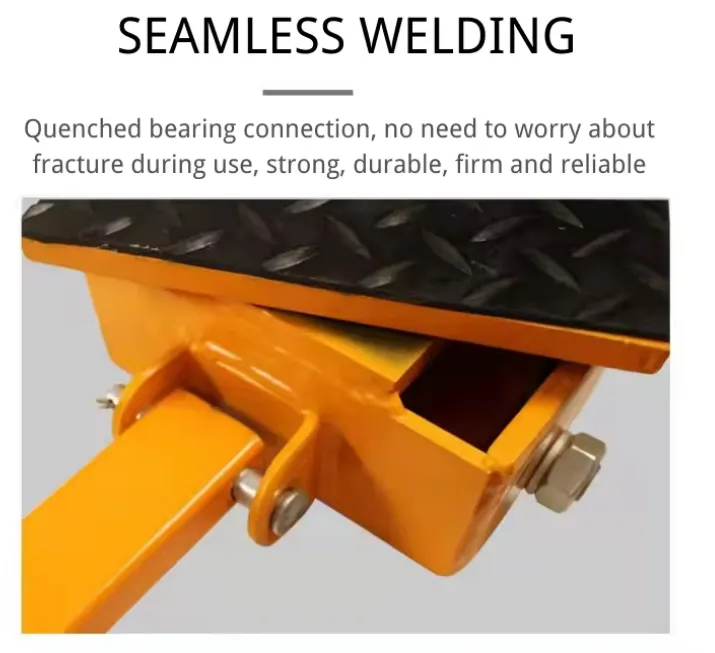1 Ton Capacity Overhead Crane for Efficient Material Handling Solutions
Understanding 1% Ton Overhead Cranes Function, Advantages, and Applications
Overhead cranes are essential components in industries where heavy materials need to be lifted and moved efficiently. Among the various types of cranes, a 1% ton overhead crane might raise some eyebrows; you may be wondering if it’s a typographical error or an unconventional specification. In fact, when we discuss a 1-ton overhead crane, we are referring to cranes that can lift and transport loads weighing up to one ton or approximately 2,000 pounds. These cranes play a crucial role in manufacturing, construction, warehouses, and shipping facilities.
What is a 1-Ton Overhead Crane?
An overhead crane is a type of crane that is used to lift and move heavy loads throughout a workspace. It consists of a beam or bridge that runs along two rails, which are positioned high above the ground. A hoist mechanism moves along the beam, allowing workers to raise and lower materials as needed. A 1-ton overhead crane is designed to safely lift loads of up to one ton, which makes it suitable for various industrial applications.
Types of Overhead Cranes
There are several types of overhead cranes, including
1. Single Girder Overhead Cranes These cranes have a single beam or girder that supports the hoist and trolley. They are typically used for lighter loads and can be more economical for low-capacity lifting.
2. Double Girder Overhead Cranes With two girders running parallel to each other, these cranes provide increased strength and stability, allowing them to handle heavier loads, making them ideal for a range of industrial applications.
3. Top Running vs. Under-Hung Cranes Top running cranes have the girder mounted on top of the runway beams, while under-hung cranes are mounted beneath the beams. The choice between the two depends on the specific workspace and lifting requirements.
Advantages of 1-Ton Overhead Cranes
Investing in a 1-ton overhead crane comes with numerous advantages
1 ton overhead crane

1. Efficiency Overhead cranes are designed for rapid movements and easy maneuverability, which significantly enhances productivity in busy work environments.
2. Space-Saving Design By operating above the work area, these cranes free up valuable floor space, enabling better organization and movement of materials.
3. Safety Overhead cranes are designed with numerous safety features, including limit switches, overload protection, and emergency stop buttons, ensuring that heavy loads can be lifted without endangering workers.
4. Versatile Applications 1-ton overhead cranes can be used in a variety of settings, from assembly lines in manufacturing to warehouses where heavy packages need to be stacked and transported.
5. Reduced Labor Costs By automating the lifting process, businesses can reduce the need for manual labor, leading to cost savings and increased safety for employees.
Applications of 1-Ton Overhead Cranes
Due to their practicality and versatility, 1-ton overhead cranes find applications in numerous settings, such as
- Manufacturing Plants They assist in the assembly of large components, moving parts from one station to another effectively. - Shipping and Receiving These cranes are perfect for loading and unloading heavy packages in warehouses and shipping yards. - Construction Sites They help lift and position building materials, enhancing efficiency on project sites. - Maintenance and Repair Facilities These cranes are vital in workshops where heavy machinery parts need to be handled.
Conclusion
In conclusion, a 1-ton overhead crane is an invaluable asset in various industries, providing a safe, efficient, and cost-effective solution for lifting and moving heavy loads. Understanding the types, advantages, and applications of these cranes is paramount for businesses looking to improve their operational capabilities. By integrating this equipment into their workflows, organizations can streamline their processes, enhance productivity, and ultimately achieve their operational goals. Whether you are in manufacturing, construction, or logistics, a 1-ton overhead crane could be the perfect addition to your toolkit. Investing in this equipment not only boosts efficiency but also ensures safer work environments for personnel handling heavy materials.
-
Unlock Seamless Relocation with Our Heavy Equipment Moving ExpertiseNewsJun.06,2025
-
Unleash Unrivaled Flexibility with Our Adjustable Gantry CraneNewsJun.06,2025
-
Unleash Heavy-Duty Efficiency with Our Industrial Gantry Crane SolutionsNewsJun.06,2025
-
Revolutionize Steel Handling with Our Magnetic Lifter RangeNewsJun.06,2025
-
Master Equipment Mobility with Premium Machinery Mover SolutionsNewsJun.06,2025
-
Elevate Your Material Handling with Magnetic Lifter TechnologyNewsJun.06,2025
-
YS Permanent Lifting Magnets: The Smarter Way to Handle SteelNewsMay.22,2025
